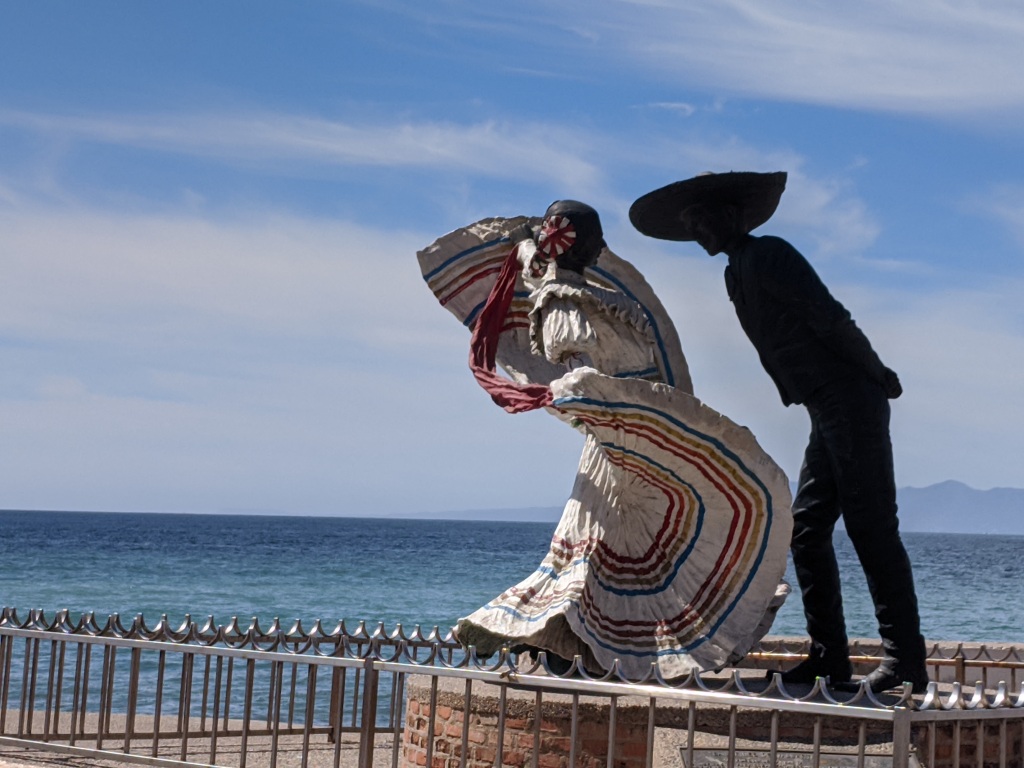












I have always thought of the Louvre as being a modern building with glass pyramids. I never knew it was actually eight centuries old! It began as a 12th century fortress surrounded by mote, built for protection. Then in 1542, Francois I added to it and made it into a castle. Eventually, matching wings were added until it had buildings surrounding a large courtyard. Then part of it was destroyed and never rebuilt, leaving a U-shaped courtyard. It is in this U-shape that the glass pyramid we now know of as the Louvre was placed, mainly as a way to modernize the building and to pull together the wings of this amazing art museum together into one. If you go downstairs as far as you can go, you will be able to walk in the original mote — sans water, of course!
This art museum is overwhelming. We spent hours there and didn’t even come close to seeing it all. At one point, we were tired and hungry and thought we might leave and come back. We couldn’t do it. We just got a quick snack at a stand right outside the ticketed area and then went back in for more. There were single paintings that covered entire walls, and there were whole galleries dedicated to just one artist. Eventually, we were so tired, we committed to glancing through just one more gallery. But the stories behind each work were so fascinating, even that took us over an hour longer!
We saw the oldest piece in the museum: a sphinx that dated back to 2,600 b.c., but we quickly moved on to more “modern” art: The Venus de Milo. Greeks were sculpting back in the second century, but the only way most Americans know what they really looked like is when Romans found a piece they liked, they made copies of it. This is not true of the Venus de Milo. She is an original Greek sculpture that was unearthed accidentally in 1820 by a farmer on the island of Milo. She was named Venus possibly because she was beautiful, so they guessed she was the goddess of love and fertility. We don’t really know that’s what she represented because her arms have broken off. If only we knew what they had carried we might have a more accurate idea of what to name her. Not only that, but if she was in fact the goddess of love and fertility, Venus is what the Romans would have called her! The Greeks would have called her Aphrodite!





We also saw what may have been the largest painting in the museum. It was an amazingly detailed rendition of the Coronation of Napoleon by David (pronounced Dah-veed). He was an actual witness to the coronation and was commissioned by Napoleon to do this painting. He definitely took some gutsy artistic license, however. For example, he actually painted himself and his wife, as if they were in the balcony with the nobles watching the event! He also shows Napoleon holding the crown in the air, ready to crown, not himself, but his wife Josephine. Evidently, he didn’t like the position Napoleon was in when he crowned himself. And yes, that’s what happened. Napoleon crowned himself the king to support the idea that the French Revolution had pushed the upper leadership of the church (who normally would have) of power. Then he had David paint the pope into the picture, looking on in approval, even though he wasn’t even at the event! David also painted in Napoleon’s mother, who, protesting the tension between him and his brother, had chosen not to attend. His brother, who also wasn’t present, is included in the painting, as well as Julius Caesar, who had been dead almost 2,000 years!

Finally, we did see the museum’s most famous painting, Mona Lisa. I found myself taking pictures of the people taking pictures of the painting because it was so fascinating to watch hundreds of people from all over the world so desperate to see this small painting, roped off and hanging alone on a large white wall. Had they even noticed, I wondered, the three other original Leonardo da Vinci paintings just around the corner? I’ve pictured them here as well because they were absolutely exquisite, especially the one of Saint Ann, her daughter Mary, and her grandson Jesus. Jesus is trying to wriggle away from his mother and is reaching toward a lamb. I couldn’t help but wonder if the artist purposely chose a lamb, since lambs were sacrificed for the forgiveness of sins and Jesus was later proclaimed the lamb of God — and then sacrificed for the forgiveness of sins. Whatever the case, Da Vinci had figured out, in a world where portraiture previously yielded disappointing results, how to capture the human face and body like never before. He used a technique that at the time was all his own but is now known as atmospheric sphumatto. The closest I can get to describing it is that instead of outlining a feature, such as a lip or an eye, and then coloring it in, he created the feature so that it evaporated into the background.





Who was Mona Lisa? She was actually the wife of clothing merchant. He commissioned Leonardo da Vinci to do a portrait of “my lady Lisa.” The crazy thing is, it was never given to the clothing merchant. His assistant still had it in the small village in France when Leonardo died.
Was he, like many great artists, unwilling to finally call it finished? Upon studying the painting, they have now found that the latest brush strokes were added in 1517, only two years before his death, though it had been begun 14-16 years before. I suppose we’ll never know why this famous painting remained at the artist’s side for the rest of his life. And I suppose he never knew the painting he never delivered would become the most famous painting he had ever done!
Cezanne, Monet, Renoir, and on and on and on. Original works, available for anyone to see for a price. We could have spent days at the Louvre, and we were thankful we were there on a Wednesday. We could have stayed until 9:45 p.m., but the day had already filled us up, and we still had a bus ride “home,” so we finally dragged ourselves away at eight, already talking about what we would see on our next trip to Paris.











Leave a comment